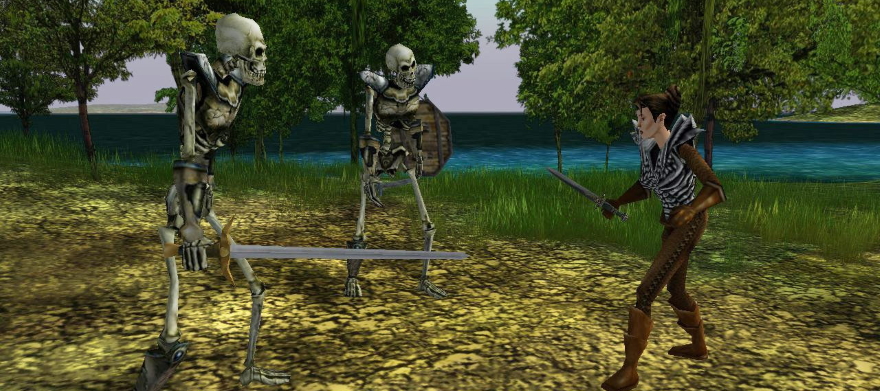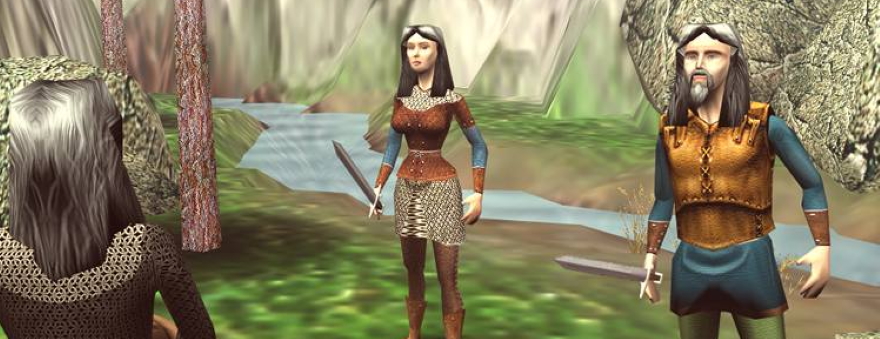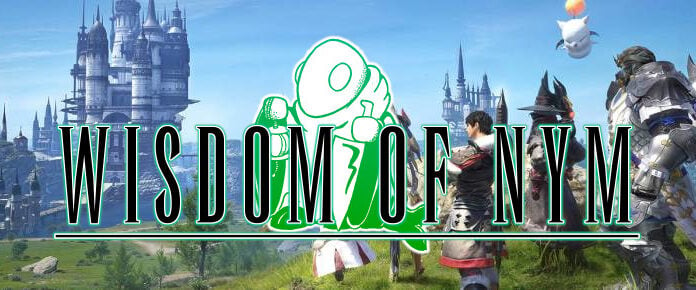
The name “Codemasters” is far more familiar to European players than North American ones, as the British developer and publisher was active on the continent since 1986. It got its fingers in the MMO genre early as it acquired ownership of The Realm, a 2-D game, in 1999. Personally, I’m most familiar with its operation of Lord of the Rings Online, which ran from the game’s launch until 2011.
What I wasn’t as familiar with — and perhaps you aren’t either — was Codemasters’ own attempt to bring an MMORPG to market. This was Dragon Empires, a territory-based PvP title in the vein of Shadowbane or Dark Age of Camelot. As Dragon Empires never did see launch, the memories of this title have long since faded in the collective minds of MMO players.
Today, we’re going to jump back to 2001 and see what could have been: A Codemasters-created and -run fantasy massively multiplayer online roleplaying game.
Making an MMO on the cheap
Codemasters certainly was MMO-crazy in the early 2000s, snapping up a couple of additional titles like RF Online to run. According to one inside source, Codemasters made a significant misstep when it turned down a golden opportunity in 2001 to publish Dark Ages of Camelot in Europe.
“One person was asked to review the game,” Ex-Codemasters marketer Bruce Everiss wrote in 2008. “He reported back that it was just EverQuest light. So the directors said ‘no thank you’ to Mythic and threw away a fortune.”
Instead, the company figured it could make and distribute a title all on its own. After toying around with the idea of taking The Realm to a 3-D setting, in September 2001, Codemasters announced that its California studio was working a “groundbreaking” online persisted world RPG called Dragon Empires. The studio said that it was striving to “break the mold” by emphasizing open-world PvP.
“It is open season on all other players all the time,” the studio said in its press release, “thereby enforcing the concept of player clans forming and ruling sprawling cities within the game’s world. The world is made up of 100 lands spread over five empires, a world that can be ruled by player clans and a world whose strongholds are guarded and policed by fiercely protective dragons.”
It’s open season on you
Codemasters did note that there’d be penalties to engaging in non-consensual PvP, as player-killers would be branded outlaws that would be roasted alive by the dragonish city protectors. Other previews shed a different light on this system, saying that players would start as neutral civilians and eventually end up pledging allegiance to one empire over the others. If you fought in a different empire’s territory, you’d earn that bounty hunter-attracting outlaw label while also getting extra experience.
“Real-time combat is not a revokable feature of Dragon Empires,” wrote then-Lead Designer Stephen Nichols. “It will work, or the game won’t ship. The same goes for universal PvP. The game design is predicated on player/player conflict. It’s not feasible to remove it.”
Nichols left the project shortly after Dragon Empires was announced, in October 2001.
The hope was that players would start to form clans and empires to spread out over a game world and engage in never-ceasing warfare from then on out. Real-time combat and sieges were at the core of the conflict. At the time, slow and methodical tab-target combat was the standard in the industry, so Codemasters saw its faster-paced action combat as being revolutionary.
There was a lot of PvE content, even though this was primarily a PvP title. At E3 2004, Gamespot reported that there was to be over 500 quests at launch, 50 capturable cities, and 580 square miles of virtual territory. There were three races, Human, Shadow, and Dragonblood, with an additional 15 classes from which to choose.
“A standing joke”
The California studio in question was the remnants of Sierra On-Line, which had been working on Middle-Earth Online until 1999. Codemasters swooped in after that project shut down and most of its staff was laid off, taking over the building and re-employing the devs. It did have a lot of trouble securing a community manager, with its first hire lasting barely a week.
Initially, Codemasters aimed for a Q2 2002 release with the then-standard business model of buying the boxed product and paying for a monthly subscription. The team and budget started to balloon without any restraint, and community hype was nurtured with appearances at E3. Even fantasy author Piers Anthony was hired to add some writing to the MMO.
Early interest in Dragon Empires was significant, and over 120,000 players signed up to test out the beta — a beta which did not yet exist. It soon became apparent that the 2002 date wasn’t going to happen.
“Within Codemasters the whole project became a standing joke. Everyone knew it was going nowhere except the directors,” Everiss wrote. “It was a bottomless pit into which successive millions of pounds were being poured. Even marketing started to lose the will to maintain the charade. The community manager left. And still the team became bigger.”
Hitting a wall
A limited-run closed beta popped up in February 2004. However, after repeated delays, Codemasters finally came out in September 2004 and said that it decided to cancel the project due to technical issues.
Apparently the devs couldn’t figure out how to get the backend to work properly to support the number of clients that was needed for an MMORPG. They posted an explanation saying that there were “unexpected obstacles with the server code, in particular our ability to serve clients at a scale which would have permitted us to launch the game as an MMO.” After evaluating what it would take to actually fix these issues, Codemasters found that the cost was too high to stomach.
Codemasters’ new financial director in 2004, according to Everiss, had investigated the situation and “he couldn’t believe it. So he reported to the board and they has a collective apoplectic fit. They had sleepwalked into disaster when all around them watched. Trying to do something on the cheap had ultimately cost a fortune.”
Fans of the project did launch an online petition to bring the game back, but as with pretty much all online petitions, it ended up going nowhere.
 Believe it or not, MMOs did exist prior to World of Warcraft! Every two weeks, The Game Archaeologist looks back at classic online games and their history to learn a thing or two about where the industry came from… and where it might be heading.
Believe it or not, MMOs did exist prior to World of Warcraft! Every two weeks, The Game Archaeologist looks back at classic online games and their history to learn a thing or two about where the industry came from… and where it might be heading.
















